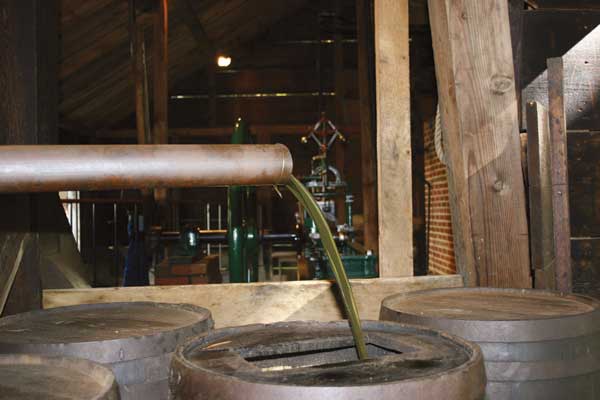Oil
 Crude oil is a nonrenewable fossil fuel. It is formed when heat and pressure compressed the remains of prehistoric plants, animals, and aquatic life under the bed of the sea or lakes for millions of years, thus becoming fossil fuel. Oil is drilled and pumped from giant underground pockets, or oil wells, and processed through a system called distillation.
Crude oil is a nonrenewable fossil fuel. It is formed when heat and pressure compressed the remains of prehistoric plants, animals, and aquatic life under the bed of the sea or lakes for millions of years, thus becoming fossil fuel. Oil is drilled and pumped from giant underground pockets, or oil wells, and processed through a system called distillation.
Distillation separates the by-products of crude oil. This process forms multiple fuels and other useful products, including gasoline and diesel for transportation fuel, kerosene and natural gas for heating and electrical generation, and oil for machinery lubrication.
Most domestic production for the United States occurs along the Gulf of Mexico, as well as in Alaska. Even though most of the oil comes from outside of the country, almost all is processed domestically. The nation uses oil for 40% of all energy demanded, and 99% of that is used for transportation purposes.
Pennsylvania has had a long history of oil production and presently contributes modestly to the industry. Drake Well in northwest Pennsylvania is the world’s oldest commercially drilled oil field and was an important player during the mid- to late-nineteenth-century oil industry.
In 2005, Pennsylvania ranked nineteenth in U.S. oil production, contributing 3,947,000 barrels of oil. Although the commonwealth contributes little overall to total domestic production, it plays a large part in oil processing. The commonwealth leads northeastern states in crude oil processing plants, distilling a large quantity of imported oil along the Delaware River just north of Philadelphia. Even though the importance of Pennsylvania oil has decreased over the years, it still plays an important role in today's industry.
